CSS Forums
Saturday, April 27, 2024
07:48 PM (GMT +5)
07:48 PM (GMT +5)
|
|||||||
| General Knowledge, Quizzes, IQ Tests A zone where General Knowledge related to this exam can be shared.Surveys and Threads with polls and questions that require answers can be Posted here |
 |
Share Thread:
 Facebook
Facebook
 Twitter
Twitter
 Google+
Google+
|
|
|
LinkBack | Thread Tools | Search this Thread |
|
#1
|
||||
|
||||
|
A city becomes “lost” when it is abandoned by its inhabitants and left to decay. This can be the result of war, migration, or natural disaster, but in each case these cities can act as a sort of time capsule, leaving a civilization frozen in history and waiting to be discovered. While many of these cities have indeed been rediscovered, others have never been found and have taken on the status of legend. Whether real or mythical, the following are the ten lost cities that have most captured the imaginations of historians, archeologists, and adventurers.
10. The City Of The Caesars Also known as the Wandering City and the City of Patagonia, The City of the Caesars is a mythical city that is believed to have been located on the southernmost tip of South America in the region known as Patagonia. The city has never been found, and at this point it is considered more legend than anything, but in its time it was quite sought after by colonial explorers. It was said to have been founded by survivors of a Spanish shipwreck, and was believed to possess huge amounts of gold and jewels. Over time, a number of legends have formed around the City of the Caesars, with some saying that it was populated by 10-foot tall giants, and others claiming that it was a city of ghosts that could appear and disappear at will.  9. Troy Made famous in the epic poems of Homer, Troy was a once-legendary city located in modern day Turkey. Best known for being the site of the Trojan War, ancient Troy was a strongly fortified city that stood on a hill near the river Scamander. Its coastal location allowed it to be a naval power, and nearby plains provided excellent land for farming. Troy was long considered by many to be the stuff of myth until it was first excavated in the 1870s by Heinrich Schliemann, who discovered that there were actually numerous cities on the site, which over the years had been built on top of one another. Although it was once a towering seat of power, the modern-day Troy excavation site is said to be relatively unimpressive, the result of years of digging and frequent looting by tourists.  8. The Lost City Of Z Supposedly located deep in the jungles of Brazil, the lost city of Z was said to be an advanced civilization with a sophisticated network of bridges, roads, and temples. Speculation about Z began after a document was found in which a Portuguese explorer insisted he had visited the city in 1753, but otherwise no evidence of its existence has ever been uncovered. The city of Z is most famous for attracting the interest of explorer Percy Fawcett, who in 1925 vanished without a trace while in search of it, and over the years a number of other adventurers have died or disappeared while on its trail. In recent years, a city known as Kuhikugu was discovered in the Amazon Rainforest that showed evidence of sophisticated fortifications and engineering, leading many to speculate that it may be the source of the Z legend.  7. Petra Arguably the most beautiful of all the cities on this list, Petra is located in Jordan near the Dead Sea and is believed to have once been the center of the Nabataean caravan trade. Its most striking feature is its exquisite stone architecture, which is carved out of the rocks of the surrounding mountains. This helped make Petra a naturally fortified city when it was established as a capital in 100 B.C., and evidence suggests that it featured many other technological advancements like dams and cisterns, which helped the inhabitants channel the region’s flash floods and store water for use in times of drought. After hundreds of years of prosperity, the city went into decline after the Romans conquered the region, and in A.D. 363 an earthquake destroyed several of its buildings and crippled its infrastructure. Petra was eventually abandoned, and it stood for years in the desert as something of a curiosity before being revealed to the world at large in 1812 by a Swiss explorer.  6. El Dorado One of the most famous of all the legendary cities, El Dorado was a mythical empire supposedly found in the jungles of South America. Literally meaning “The Golden One” in Spanish, the city was said to be led by a powerful king and hold untold riches of gold and jewels. In the time of the conquistadors, the city was a subject of constant fascination, and several disastrous expeditions were launched in search of it. The most famous of these was headed by Gonzalo Pizarro, who in 1541 led a group of 300 soldiers and several thousand Indians into the jungle in search of El Dorado. They uncovered no evidence of the city or its treasures, and after the group was decimated by disease, famine, and attacks by natives, the expedition was abandoned.  5. Memphis Founded in 3,100 B.C., Memphis was the capital of ancient Egypt, and served as the civilization’s administrative center for hundreds of years before being abandoned with the rise of Thebes and Alexandria. At its height, Memphis is estimated to have had a population of more than 30,000, which would have made it the biggest city of antiquity. Over the years, the location of Memphis became lost, and it was a subject of much debate among archeologists before it was rediscovered by a Napoleonic expedition in the late 1700s, and it was then that the city’s sphinx, statues and temples were first seriously studied. Unfortunately, stones from the ruins had been appropriated to build nearby settlements, and many important parts of the site remain lost to historians.  4. Angkor The Angkor region of Cambodia served as the center of power for the Khmer Empire from 800 AD well into the 1400s. The region was abandoned after a slow decline that ended with an invasion by a Thai army in 1431, leaving the massive city and its thousands of Buddhist temples to be reclaimed by the jungle. The city lay relatively untouched until the 1800s, when a group of French archeologists began to study and restore it. Angkor and its surroundings– which rival Los Angeles in size– have since been recognized as the biggest pre-industrial city in the world, and its famed temple of Angkor Wat is commonly considered to be the largest religious monument in existence.  3. Pompeii The Roman city of Pompeii was destroyed in AD 79 after the nearby volcano Vesuvius erupted and buried the entire community under 60 feet of ash and rock. The city was estimated to have had around 20,000 inhabitants at the time, and it was considered one of the premier vacation spots for the upper class of Roman society. After the eruption, the ruins stood for 1,700 years before being accidentally rediscovered in 1748 by workmen building a palace for the King of Naples, and since then Pompeii has been the source of constant excavations by archeologists. Ironically, the devastation caused by Vesuvius also helped preserve the city’s architecture, which along with countless frescoes and sculptures, have helped make Pompeii a key part of modern historians’ understanding of life in ancient Rome.  2. Atlantis At this point it is fairly easy to write Atlantis off as nothing more than a myth, but this legendary city has been a source of speculation ever since the philosopher Plato first wrote about it in 360 B.C. Described by Plato as an advanced civilization and formidable naval power, Atlantis is said to have conquered much of Europe before sinking into the sea as the result of some kind of environmental disaster. While Plato’s story is seen by most as a work of fiction, his description of a massive civilization years ahead of its time technologically has captured the imaginations of countless writers and would-be adventurers, and there have been numerous expeditions launched in search of the city. Perhaps the most infamous occurred at the beginning of WWII, when the Nazis supposedly organized a journey to Tibet with the hope of finding remnants of Atlantaen culture.  1. Machu Picchu Of all the lost cities that have been found and studied, perhaps none is more mysterious than Machu Picchu. Isolated near the Urubamba Valley in Peru, the city was never found and plundered by conquistadors, and it was not until historian Hiram Bingham visited it in 1911 that it became known outside of the region. The city is divided into districts, and features over 140 different structures bordered by polished stone walls. It is said to have been built in the 1400s by the Incas and abandoned less than 100 years later, most likely when its population was wiped out by smallpox brought over from Europe. There has been much speculation as to what Machu Picchu was used for, as well as why the Incas chose such to build it in such a strange location. Some have said it was a holy temple of sorts, while others have maintained that it was used as a prison, but recent research suggests that it was probably a personal estate of the Inca emperor Pachacuti, and its location was chosen because nearby mountains figured prominently in Inca astrological mythology. 
|
|
#2
|
|||
|
|||
|
Moen Jo Daro in pictures
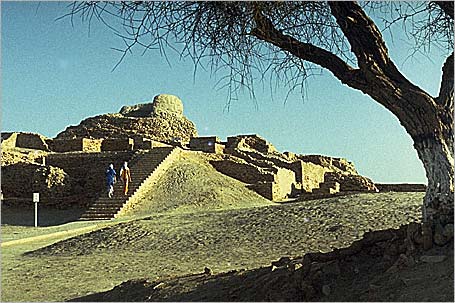 DK Area of Moen Jo daro The Round structure on top is The Buddhist Stupa Built in 2nd centurary AD much later then the the Indust civilization. SD area was the administrative are of Moen Jo daro. 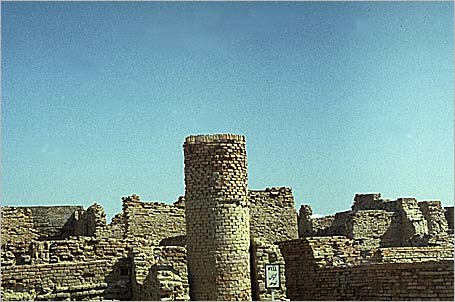 DK Area a well infront of the chief's house. The wells were the source of Drinking water and were built and remaind there for generations to come. The Circle of the well was raised as the city's alivation raised, thats why you see such tall chimney like wells. DK Area is the rich residential area of Moen Jo daro. 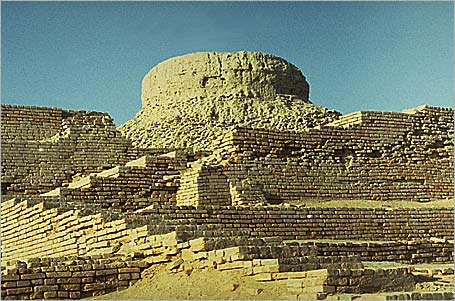 Buddhist Stupa Post moen Jo daro Structure. 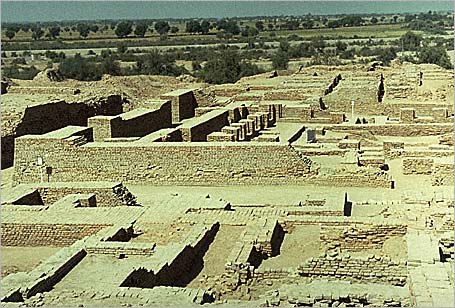 Picture take from the top of Stupa showing The View of Great bath a street and state Granery. Moen Jo daro was an excelently planed city of the past of which there is no example even now. 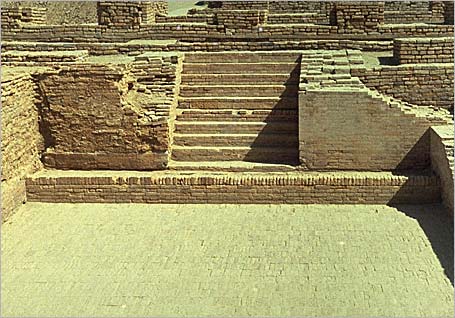 The Great Bath at Moen Jo Daro SD area was probably used for religious bathing. An structure made with great care and responsiblity having wodden steps proper drainage and filling system. Walls of the bath were lined with Bituman which shows that people had been bringing oild while travelling from Masopotamia. 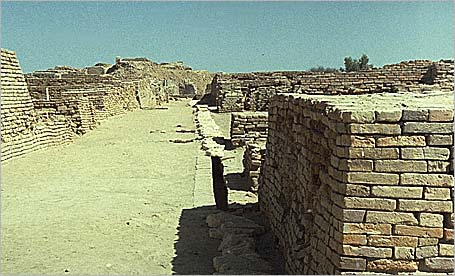 A street of the later level Street drainages were covered as you see in this picture. There were even Guard rooms at crossroads and Dust bins were placed at small distances. 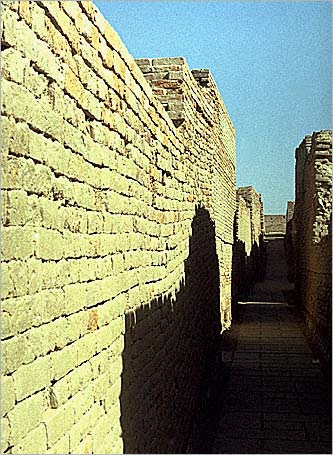 A long Street in DK area 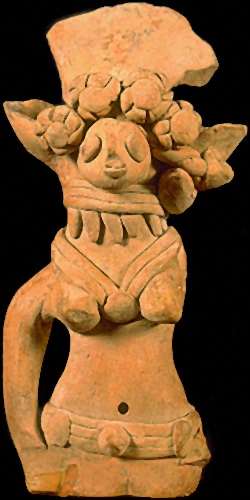 Mother Goddess found from moen jo daro   regards, floydian
__________________
Police Service of Pakistan (PSP) 39th Common Training Program |
| The Following User Says Thank You to floydian For This Useful Post: | ||
saim n babar (Tuesday, July 06, 2010) | ||
 |
«
Previous Thread
|
Next Thread
»
|
|
 Similar Threads
Similar Threads
|
||||
| Thread | Thread Starter | Forum | Replies | Last Post |
| Shahid Javed Burki article | Islaw Khan | News & Articles | 313 | Wednesday, February 06, 2013 10:14 AM |
| 'Reading is a lost art' | Faryal Shah | Essays | 0 | Monday, August 11, 2008 01:58 AM |
| The Sun Also Rises: The Lost Generation | Last Island | English Literature | 0 | Thursday, June 07, 2007 03:52 AM |
| Paradise Lost "John Milton" Book 1 | mudassar345 | English Literature | 0 | Wednesday, December 20, 2006 02:19 PM |
| Paradise Lost: A Classical Epic | Last Island | English Literature | 0 | Tuesday, May 31, 2005 08:03 AM |







